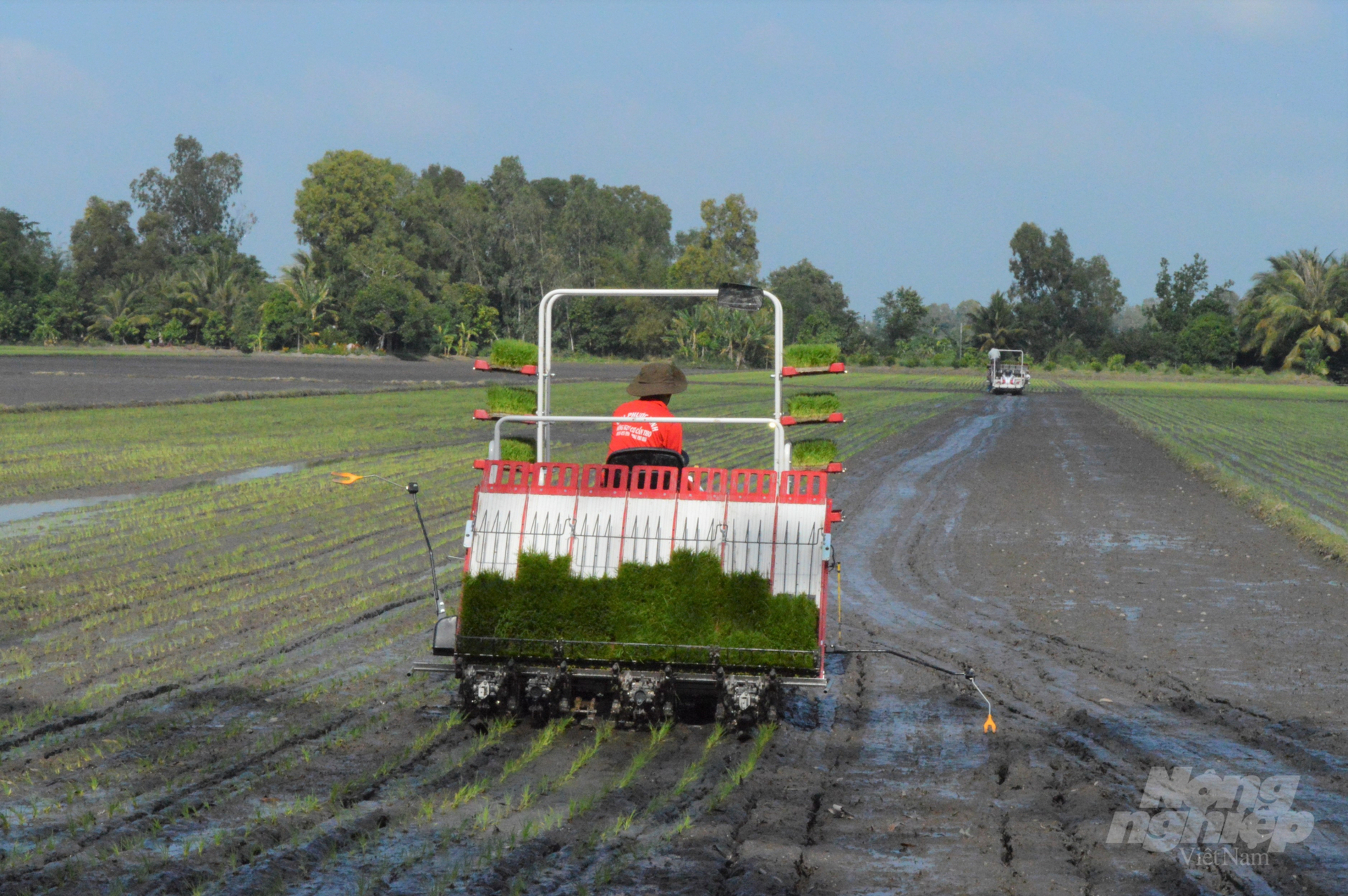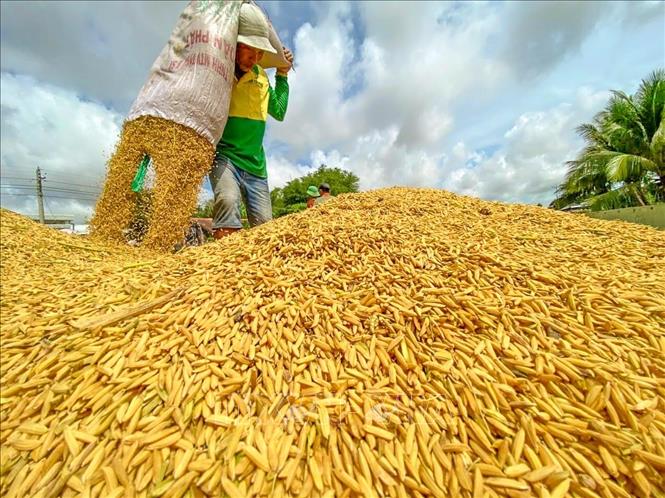November 23, 2025 | 10:27 GMT +7
November 23, 2025 | 10:27 GMT +7
Hotline: 0913.378.918
November 23, 2025 | 10:27 GMT +7
Hotline: 0913.378.918

Fuel demand in agricultural services is constantly increasing. Photo: VAN.
Biofuels have been holding the dominant industrial use for agricultural commodities in recent years. Grains and sugar crops are used in production activities but also processed into other products such as molasses and vegetable oils.
Biofuel demand is largely determined by the demand for transported fuel and domestic policy support. Over the next decade, the global use of biofuels is expected to continue to expand significantly, driven primarily by additional demand in middle-income countries, which is supported by domestic production subsidies and mixed fuel use. Substantial increases in biodiesel production in the USA are due to increased targets and adoption of state and federal renewable fuel programs as well as biomass-based diesel tax credits, so the demand will continue to increase.
In high-income countries, notably the EU, growth in the use of biofuel will be constrained by reduced demand for transport fuels and reduced incentives. The EU’s Renewable Energy Directive has classified biodiesel made from palm oil as “high risk”. As a result, the use of palm oil-based biodiesel is expected to decrease, thereby slightly reducing the total use of biodiesel in the EU. However, the share of biodiesel in total diesel use is expected to increase over the next decade.
Transport fuel consumption is expected to expand in Brazil, Argentina, Colombia and Paraguay in the future, with ethanol and biodiesel use expected to increase respectively. Indonesia's diesel use is set to increase and the mixability ratio remains above 30%.
In South and Southeast Asia, biodiesel is expected to become more popular due to the increase in demand for transport and industrial fuels. As for India, sugarcane ethanol is predicted to contribute significantly to the target of achieving an ethanol blending ratio of 16% by 2025.
Agricultural commodities are also used as inputs for other industrial applications, including in the materials industry (plastics, clothing, paints), biochemistry and biopharmaceuticals. On the other hand, industrial application of agricultural commodities for commercial production, such as cereals for starch production, has become increasingly important in recent years and is expected to be the main source of inputs.
The medium-term projections presented in the Agricultural Outlook 2023 - 2032 assume a rapid recovery from inflationary pressures, no changes to existing policies, and developments following the trends of consumer preferences over the next decade.

The demand for food is increasing due to political instability and global economic crisis. Photo: VAN.
Apart from conflicts and geopolitical tensions, currently the most serious threat to the consumption of agricultural commodities, particularly food consumption, is posed by the consequential adverse economic effects of persistently high inflation and a potential global recession.
Considering the current context, the global reference price in real terms is expected to decline slightly over the next decade; but consumer prices may spike in response to intense economic, political or environmental events. There are many additional factors along the food value chain that contribute to food price inflation, including market strength in the processing and retail sectors.
Income and food price shocks, especially in countries with high food expenditure rates, also pose an additional threat, not to mention the risk of further outbreaks of disease that could affect human health or agricultural commodity production in general.
Environmental, health and welfare concerns may increasingly influence consumer choices and drive growing demand for items with higher value, such as poultry, fish, fruits, vegetables, nuts and seeds, as well as alternatives such as plant-based milk, gluten-free foods, and vegan meat substitutes.
Demand for certified foods as well as vegan alternatives, often advertised as more nutritious and eco-friendly, is expected to increase. For example, while increased consumption of fruits and vegetables may seem desirable from the perspective of health facilities, the frequent use of agrochemicals and water in cultivation as well as high emissions rate from cold chain and transportation may not seem desirable from an environmental perspective.
Translated by Samuel Pham

(VAN) Results from the Sustainable Durian Model Project in Dak Lak have confirmed the critical role of Yara Viet Nam in transferring advanced nutritional solutions to farmers.

(VAN) In Tuyen Quang province, livestock farmers have introduced effective models and innovative practices that significantly strengthen African Swine Fever prevention and control efforts.

(VAN) This is the study conducted by IRRI and Can Tho University on the rice straw value chain in Mekong Delta showing an economic potential of more than 6.6 trillion VND/year.

(VAN) By participating in cooperative economics, many farmers in Tay Ninh have overcome hardship, mastered clean dragon fruit cultivation techniques.

(VAN) The crossbreeding program in the former Binh Dinh province (now part of Gia Lai) has shown signs of decline, and urgent measures are needed to revive it and sustain past achievements.

(VAN) The agricultural sector agreed on a roadmap to pilot the MRV protocol and expand low-emission rice production from the 2025-2026 winter-spring crop.

(VAN) Agricultural extension officers in Quang Ninh do more than transmit knowledge; they have become a steadfast support system for farmers on the path to sustainable agricultural development.